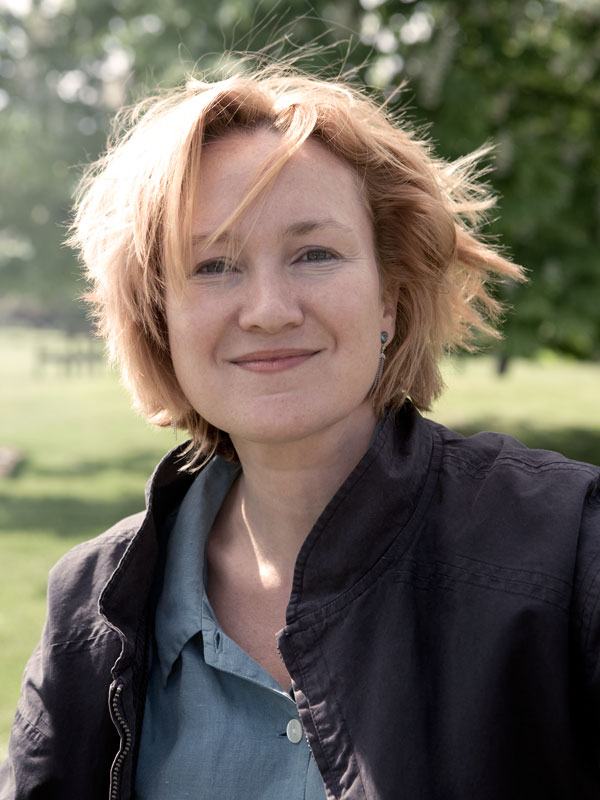2006-07 – partial fellowship funding.
Senior Research Fellow in the Department of Physiology, Anatomy and Genetics, Oxford University.
Irina Bystron is also involved in the Department of Morphology, Institute of Experimental Medicine, St Petersburg. She is a member of the Advisory Board of DGEMap, a European programme for gene expression analysis in human development.
Could you tell me something of your early life?
I was born in Grozny, but grew up in the capital of Dagestan, Machachkala, on the shore of the green-grey Caspian Sea. My strongest subjects were maths and physics, but I also loved astronomy, music and literature very much. I was quite good at school and graduated with top grades in all subjects.
When did you become interested in the human brain? Was there a reason?
In my early teens I was broadly interested in psychology, behavioural analysis and the role of emotions in rational behaviour and belief systems. I was puzzled why, for example, two individual insects or viruses would not do exactly the same thing under the same conditions. However, humans with their more complex perception, intellect and actions were the most intriguing to me. At that time I was perhaps reading too much.
What did you do to develop your interest in the brain?
After graduating from St Petersburg University I successfully completed my PhD at the Institute of Experimental Medicine (Russia), working on the transplantation of human embryonic brain tissue to restore damaged cells. At present, our knowledge of how to direct transplanted neural stem cells to their desired position in the human brain is incomplete.We do not know how to control the proliferation of stem cells after transplantation. Unravelling the early development of the human brain may help in understanding the many developmental disorders of higher brain function, such as autism, schizophrenia, childhood epilepsy, developmental dyslexia and poor mental ability. I reported some of my results to the Neuroscience Congress in Amsterdam with the support of the Soros Foundation. This was an important step for me, leading to an invitation to continue my research, joining Professor Colin Blakemore’s group at Oxford University. Since arriving at Oxford I have presented my work at many conferences around the world, including in France, Spain, Portugal, Germany, Greece and America.
After arriving at Oxford you were part of the team that made a real breakthrough. What did you discover exactly?
I found that the first neurons in the developing human brain are in place as early as 31 days after fertilisation, when the entire embryo is only about 4mm long. This unique population has not been described in any other species.We called them “predecessor neurons”. These cells are present much earlier than anyone had ever suspected. Apparently these cells set the scene for and control the neurons that are generated later, dying when their job is done. My new preliminary data indicate that predecessor neurons interact with the cells that create other nerve cells (so called neural stem cells), affecting the way in which they generate nerve cells and the type of cells they produce. Nature Neuroscience wrote of our work, “Bystron and colleagues have opened a new chapter in the developmental biology of the brain, and we eagerly await the sequel.”
As result of this work, you were selected to receive a grant from the Hill Foundation and a Pilot and Exploratory award from the Kavli Institute for Neuroscience, Yale University Medical School. What are you working on now?
The interactions between predecessor neurons and stem cells, of which there is a surprising diversity. Each type of stem cell has to be isolated and its characteristics identified to assess their potential usefulness in neural transplantation and repair. In particular, I am continuing to collaborate with a leading expert in mammalian brain development Professor Pasko Rakic of Yale University to understand how cortical development varies between humans, mice and monkeys. Our distinctive cognitive abilities place human beings in a unique position within the animal kingdom. Why and how humans evolved to be so superior in cognitive abilities to other creatures on earth is not fully understood, but it clearly involved the elaboration of the enormous cerebral hemispheres, which are the most distinctive feature of the human brain. Understanding how the nerve cells of the cerebral cortex and their complex connections are formed during development, and the species – specific genetic, molecular and cellular mechanisms is one of the greatest challenges to neuroscience.
How did you hear about the Hill Foundation?
From one of the University’s websites.
What did you know about the City of Oxford before you came here?
I understood that in Oxford the past coexists with the future. However the reality was better than any expectation. There is something special about Oxford. I especially love the Magdalen Great Tower– a different universe.
What is particularly special about this university?
The level of the freedom. It reminds me of the Argentinean writer Jorge Luis Borges’ Garden of Forking Paths where the one alternative does not always eliminate all the others.
How does everyday life in England compare with that in Russia?
That depends whose life it is. Class exists in both societies. Perhaps the English are more considerate to each other in public, whereas Russians seem closer in their family life.
